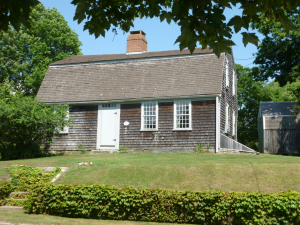What is the oldest house in Tiverton and where is it? The Tiverton Historic Preservation Advisory Board (THPAB) has a list of historic buildings in Town, based on the 1983 Preliminary Report of Historic and Architectural Resources of Tiverton from the RI Historical Preservation Commission (now RI Historical Preservation & Heritage Commission) and the Tax Assessor’s database. The THPAB recently updated their file by looking at the buildings listed in the database to determine if the architecture fits the estimated date of build. This updated listing is on the THPAB webpage on the Town of Tiverton website, and will continue to be updated by researching deeds.
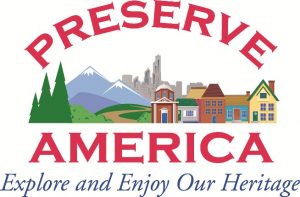 Discovering a house’s history through deed research and probate records is interesting work (and challenging sometimes, deciphering the various handwritings). Having so many historic properties as a visual part of Tiverton’s 327-year-old history is why Tiverton has been a Preserve America Community since 2011.
Discovering a house’s history through deed research and probate records is interesting work (and challenging sometimes, deciphering the various handwritings). Having so many historic properties as a visual part of Tiverton’s 327-year-old history is why Tiverton has been a Preserve America Community since 2011.
There are 339 buildings in Tiverton that have been deemed historically significant by the THPAB, either by function, history, and/or architecture. Most were built before 1925, however, those with architecture true to the period should also be preserved. Examples of this are Quonset huts, A-frames, and Craftsman houses.
Breaking down these 339 structures into timeframes of origin (or unconfirmed estimated dates of origin for those which do not have historic plaques researched by the THPAB or on the National Register of Historic Places), Tiverton has: 9 built between 1690-1749 (3 confirmed), 29 built between 1750-1799 (13 confirmed), 65 built between 1800-1849 (27 confirmed), 117 built between 1850-1899 (36 confirmed), and 86 built between 1900-1928 (13 confirmed). The Essex Public Library building is also on the list, built in 1938, as it is in process of being nominated for the National Register of Historic Places.
Unfortunately, there have been 26 buildings that have been demolished or moved out of town from the 1983 Report listing, ranging in date from the 1700’s to 1910, including one on the National Register of Historic Places (where Tom’s Market is now) and another that was recommended for the National Register.
The oldest church in Tiverton is on the National Register, built around 1835 on its present site: Amicable Congregational. Old Stone Church/First Baptist was built six years later and is also on the National Register. The next oldest is Temple Chapel/former North Tiverton Baptist, built in 1867, as inscribed on its gable facing Main Road. The former Central Baptist on Highland Road was built twenty years later. Bliss Four Corners Chapel (now Congregational) was the last to be built in the 19th century (1892), located just north of Bliss Four Corners on Stafford Road.
There are actually two original schoolhouses remaining which were built in the 1850’s. One is now a private house on King Road (c. 1850 – District #11), and the other was converted to a B&B just south of Tiverton Four Corners (c. 1854 – District # 1).
Sometime around 1847, William Pitt Bateman bought the mill site south of Tiverton Four Corners and built the grist mill and store (now a real estate office). He also built a wheelwright shop with suitable lathes and machinery for making and repairing wooden wheels across the street. In allusion to Bateman, the revival of enterprise in this immediate vicinity was known as Pittsville. When Preserved Tripp bought the wheelwright shop from the White brothers as the third owner, his wife served as librarian when the Union Society moved their books upstairs until 1888. All buildings have been preserved; the wheelwright shop is in process now.
Of two other preserved buildings that served as a business, built in the mid to late 1800’s, the younger one (1876) is at Tiverton Four Corners and has changed from its original store function with A.P. White as proprietor to that of a café. The older one is still undergoing rehabilitation, built pre-1846 and known as “The Bridgeport Block” on Main Road across from The Gut. It was one of the first stores in town and had apartments above. Later it served as a fish market; it is unknown as to what its next function will be.
Speaking of businesses, we would be remiss if we didn’t mention the houses that belonged to the family that put Tiverton on the map in the mid to late 1800’s for the fishing industry. Specifically, the renowned Joseph Church & Sons fishing fleet and factories. Joseph had seven sons who all entered the business, captains of their own fishing boats, which led to the other name for their business: The Seven Brothers. Joseph also had a daughter, Calista, who married one of his managers, Frank Cottrell. 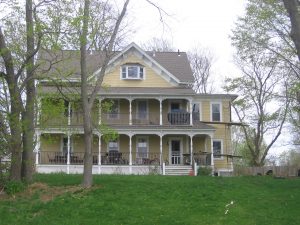 Her house is one of the more obvious late 19th century houses that can be seen from the Sakonnet River Bridge as you enter Tiverton. It is the large yellow house on the right. Calista ran the cookhouses for the pogy/menhaden factory, and served her famous baked beans and brown bread and clam chowder for the 300 men who worked in the fish factory on Common Fence Point.
Her house is one of the more obvious late 19th century houses that can be seen from the Sakonnet River Bridge as you enter Tiverton. It is the large yellow house on the right. Calista ran the cookhouses for the pogy/menhaden factory, and served her famous baked beans and brown bread and clam chowder for the 300 men who worked in the fish factory on Common Fence Point.
Most of the Church brothers’ houses have been preserved, and are scattered along Main Road from opposite Moulin Rouge to adjacent to Holy Trinity Episcopal Church. Unfortunately, the father’s house along The Gut is no longer there – just the stone foundation exists. And the largest house of all of them, belonging to Captain Nathaniel Church on the north end of Nanaquaket was torn down in 2007 to make way for a more modern one.
Moving on to other historic houses, we will not delve into details except to state that if you want to know where they are, you can access the list on the THPAB webpage which is alphabetical by street, or go to the Town’s GIS map and click on “historic” in the left margin and all the historic sites will show brown. Detailed histories for the houses that have plaques will be displayed if you click on a particular historic property. (Note: This is a work in progress.)
It should not surprise anyone who has looked at old maps of the town as to where the most historic houses would be: Main Road, Crandall Road, East Road, King Road, Punkateest Neck Road, Highland Road, Lawton Avenue, Nanaquaket Road, Riverside Drive, Stafford Road, Seapowet Avenue, and Bulgarmarsh Road – all major roads on the old maps. Bulgarmarsh has a handful, with the oldest built around 1840 by widow Hannah Manchester and sold to Thomas Durfee who added to the house and property. East Road has 17, with the oldest built around 1754.
Crandall has 30, with one of the oldest on the former Wingover Farm, built around 1720 by Samuel Hart. 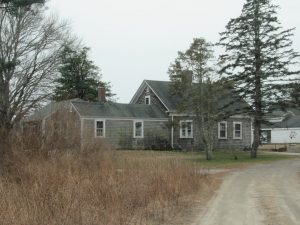 Another currently being researched may be the oldest on Crandall and possibly the second oldest in Town, built around 1700 according to the Assessor’s database. (Land Evidence Records older than 1747 reside in Taunton and access to them via the City Clerk is a challenge due to the pandemic, so it could very well be the oldest if the deeds prove it was built before 1690.)
Another currently being researched may be the oldest on Crandall and possibly the second oldest in Town, built around 1700 according to the Assessor’s database. (Land Evidence Records older than 1747 reside in Taunton and access to them via the City Clerk is a challenge due to the pandemic, so it could very well be the oldest if the deeds prove it was built before 1690.)
Highland Road has 33, the oldest built in 1793 by the Honorable Thomas Durfee, a Revolutionary War officer. 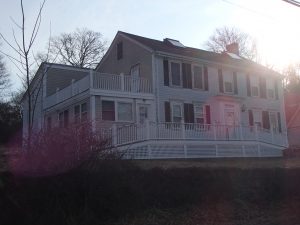 As a member of the General Assembly of RI, he served on the committee tasked with canvassing the vote of the State on the adoption of the Constitution of the United States. He also served as Tiverton Town Clerk and Chief Justice of Newport County.
As a member of the General Assembly of RI, he served on the committee tasked with canvassing the vote of the State on the adoption of the Constitution of the United States. He also served as Tiverton Town Clerk and Chief Justice of Newport County.
King Road has 8, with two built around 1760-1770, the latter by Isaac King. Lawton also has 8, with the oldest being the Lawton House, built around 1750 by William Cory and sold to John Lawton in 1760. 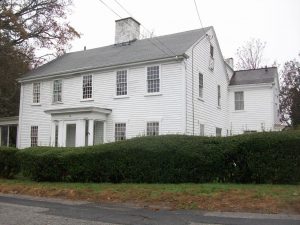 Captain Lawton built the Lawton House nearby as a resort, but was destroyed by fire in 1884. The Stone Bridge Inn was built on that same site, and was consequently demolished. The Lawton House residence is next to Whitridge Hall, built originally as a chapel with an associated library in 1876, which later transformed into a library for the public. The books consequently moved to Essex Public Library when that building was built. The hall was also used for social gatherings for the chapel, and then later became the venue for summer theater troupes in the 1950’s – and where actor Charles Nelson Reilly got his start.
Captain Lawton built the Lawton House nearby as a resort, but was destroyed by fire in 1884. The Stone Bridge Inn was built on that same site, and was consequently demolished. The Lawton House residence is next to Whitridge Hall, built originally as a chapel with an associated library in 1876, which later transformed into a library for the public. The books consequently moved to Essex Public Library when that building was built. The hall was also used for social gatherings for the chapel, and then later became the venue for summer theater troupes in the 1950’s – and where actor Charles Nelson Reilly got his start.
Main Road, also known as the Post Road in original deeds, has the most historic buildings: 87. The oldest north of Route 24 was built around 1780 by J. Russell Hicks and is currently for sale. The oldest house in Tiverton (so far, until that Taunton deed for the Crandall Road house is researched) lies south of Route 24, built around 1690 by William Durfee who was engaged in the East India trade, sailing out of Newport. His farm was deemed “The Egypt of Tiverton” by the early settlers because it was the “land of corn.” By 1698, his cattle were earmarked and registered with the Town Hall.
Nanaquaket Road has 6 historic houses, with the oldest for sale now, called “Homelands.” 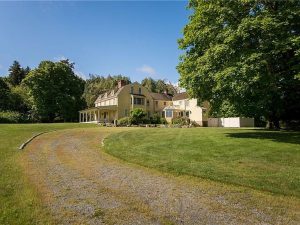 Built around 1760 by Andrew Oliver, it was confiscated by the General Assembly in 1775 because he was a Tory. Major Nathaniel Briggs acquired the property in 1781. One of a later owner’s daughter married Charles Sargent who planted a variety of rare trees on the property. He later became the Director of the Boston Arboretum.
Built around 1760 by Andrew Oliver, it was confiscated by the General Assembly in 1775 because he was a Tory. Major Nathaniel Briggs acquired the property in 1781. One of a later owner’s daughter married Charles Sargent who planted a variety of rare trees on the property. He later became the Director of the Boston Arboretum.
Punkateest Neck Road has 20 historic properties, with the oldest on the National Register of Historic Places: the Cook-Bateman Farm, built around 1730. Riverside Drive has 8, with three being the oldest (although relatively new compared to others previously stated), dating from 1885-90. Seapowet Avenue has 7, the oldest being the Almy Farm, dating from the 1700’s. Stafford Road has 9, with the oldest dating from around 1800.
Owning one of these 339 historic properties can be a challenge at times, with drafty original windows, uneven floor boards and walls, plaster ceilings and walls, and wooden gutters. But the stone foundations, the hand-crafted woodwork trim and corner posts, and easy-to-remove paned windows are worth it. Take a tour through Chace-Cory House and see for yourself – we have preserved the interior in the 1730 Colonial style in the back of the house when the Chaces built it, and in the 1816 Federal style in the front when the Corys purchased it.
